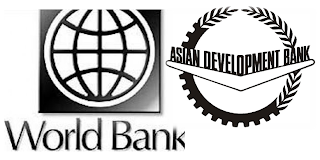
Birth Rates as Growth Engines
As Japan, many countries in Europe and now China wrestle with shrinking labor pools, a host of emerging nations are grappling with a different problem: how to reel in the benefits of a fast-growing population and avoid having too many people chasing too few jobs.
Swelling populations helped buoy industrializing economies in the U.S. and Europe in centuries past. They transformed South Korea, Taiwan and China in the 1980s and 1990s. Economists call the phenomenon the demographic dividend: It happens when droves of young people enter the workforce and choose to have fewer children or delay parenthood, leading to a sharp increase in spending and a faster-growing economy.
But a young population isn't enough on its own to underwrite a generation of growth, as the Philippines is learning.
When Asia's industrial powers embarked on their economic transformation in the 1970s and 1980s, the Philippines was left behind. Under dictator Ferdinand Marcos, corruption surged, as did grisly insurgencies involving Maoist guerrillas and Islamist separatists. Many Filipinos left. Today more than 10 million of the country's 100 million people work abroad, sending home more than $20 billion a year, providing a lifeline for their families left behind, according to government and central-bank figures.
Other countries have struggled to capitalize on their growing populations. Many Latin American countries enjoyed a similar demographic profile to East Asia's booming economies in the 1980s, but chaotic politics and poor economic planning limited how much they benefited from it.
Today, Africa's leaders face a similar test. The United Nations projects the continent's population will double to two billion people by 2050, while around 40% of the population of both sub-Saharan and North Africa is under the age of 15 today.
The U.N. projects the world's population will expand to 9.3 billion in 2050 from about 7 billion now, with most growth coming from developing nations.
Some African nations are making headway in harnessing the economic potential of a youthful population. In Rwanda, where genocide claimed the lives of some 800,000 people in the 1990s, the government has boosted tourism and services, delivering economic growth rates above 8% for the past five years. President Paul Kagame has encouraged the use of contraceptives, which has contributed to average fertility rates dropping from 6.1 births per woman in 2005 to 4.6 in 2010, according to the World Bank.
Without an effort to boost productivity and create jobs, the demographic dividend can easily become a demographic time bomb.
The Philippines is trying to avoid that fate. This former American colony has one of the highest population-growth rates in Asia, expanding by 1.9% a year, compared with 0.5% in China, according to the Kaiser Family Foundation—and one of the region's highest unemployment rates, at around 7%. To help the country's economy absorb a wave of job seekers, President Benigno Aquino III has made corruption his primary target, figuring that cleaner government is the basic building block for business confidence and job creation.
Tougher oversight has helped reduce wasteful government spending. And the economy is gaining momentum, expanding 6.6% last year.
Among other things, the Philippines has overtaken India to become the world's largest provider of voice-based outsourcing services. Banks such as HSBC, Wells Fargo and Citibank have set up back offices in the islands. To sustain the momentum, the government is paying to train 100,000 people a year in call-center "finishing schools." There they learn to handle customers and perfect their American accents. Recruiters are now heading out to find agents in places such as Davao, where vigilantes used to parade the severed heads of Communist guerrillas through the streets.
"I don't think we've seen this level of collaboration and support before," says Benedict Hernandez, head of the Business Processing Association of the Philippines. "The government used to be a model of inflexibility, but that's all changed in the past year or two."
In another break from the past, Mr. Aquino is going against the wishes of the Roman Catholic Church by promoting wider use of contraceptives. That could reduce the number of children each working-age citizen supports—and help free up the spending power of the new generation now entering the workforce.
Problems remain. Poor infrastructure means the Philippines struggles to draw in the kind of manufacturing investment that economists such as the Asian Development Bank's Rajat Nag say is required for a lasting transformation in the islands. A Communist insurgency also continues despite a peace deal with the largest Muslim secessionist group.
Yet the country is beginning to win over skeptics. In late March, Fitch Ratings upgraded the Philippines's credit rating to investment grade for the first time.
Others are warming, too. David Bonderman, founder of private-equity group TPG Capital, told an investment conference in Hong Kong late last year that "the Philippines, for the very first time in my adult life, is thought to be a place we can do business without counting our fingers afterwards."
Wall Street Journal











